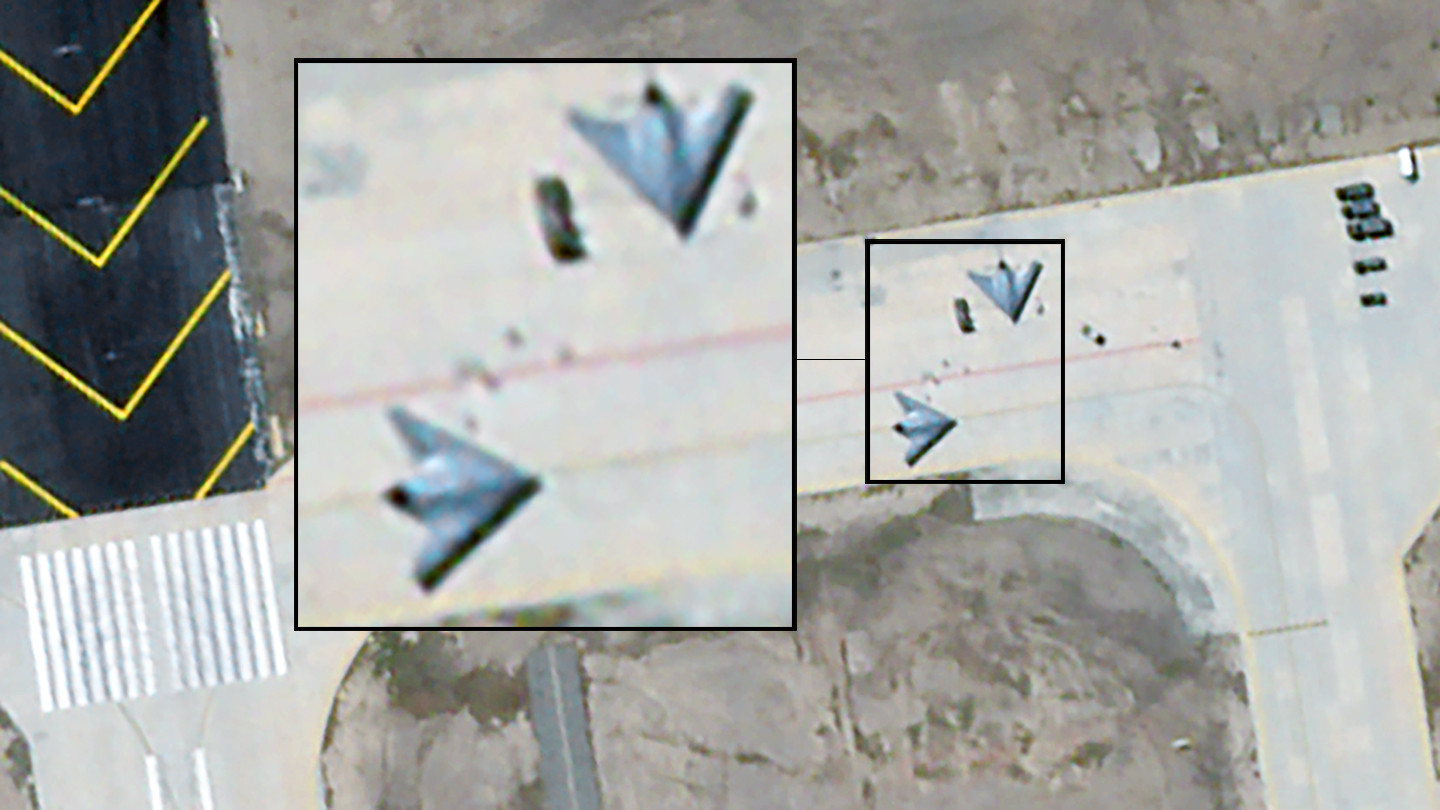Satellite imagery of a secretive Chinese aviation test base offers new evidence of a surge in the development of the GJ-11 Sharp Sword, a stealthy flying-wing uncrewed combat air vehicle (UCAV). Work on the GJ-11, which has already come with a growing eye toward future shipboard operations, swarming in cooperative groups, and teaming with crewed combat jets, reflects a broader expansion of testing of Chinese flying-wing UCAV designs. China’s efforts in this realm have been further underscored by video clips that recently emerged online and stand in stark contrast to those of the U.S. military, which is not currently pursuing any similar designs, at least that we know of in the public domain.
The War Zone has obtained and otherwise reviewed satellite imagery from Planet Labs that shows a pair of GJ-11s have been very active in recent months at Malan Air Base, which is located in China’s far-western Xinjiang province, in recent months. Sharp Swords have been spotted in the past at Malan, which has long been known to be a major hub for testing uncrewed platforms.
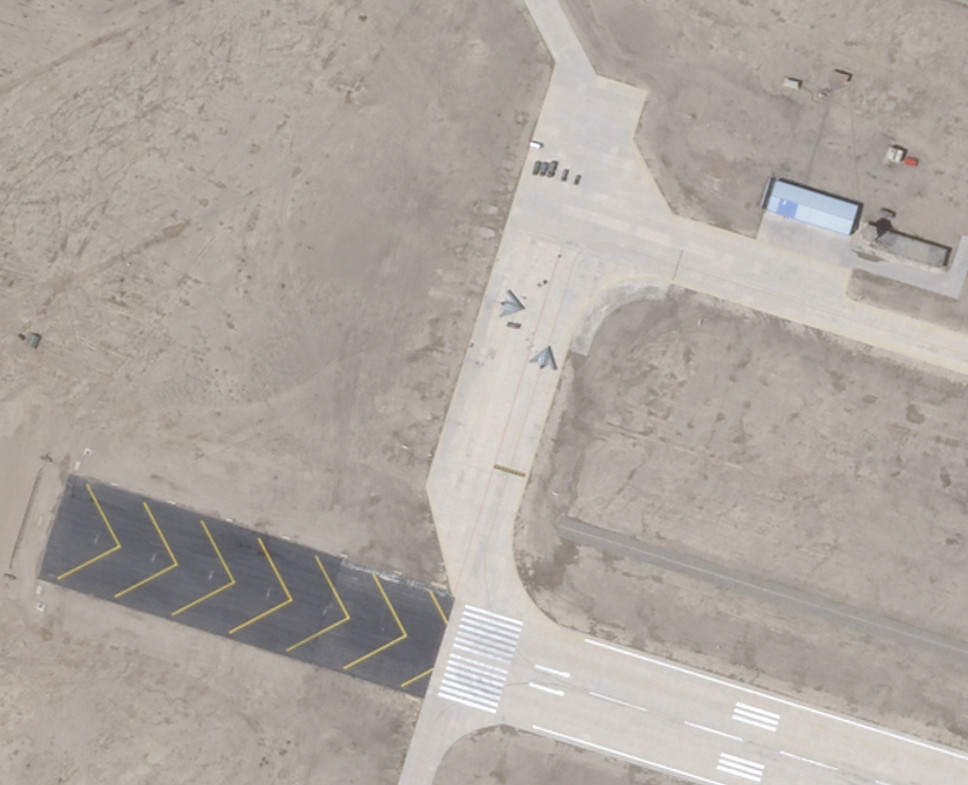
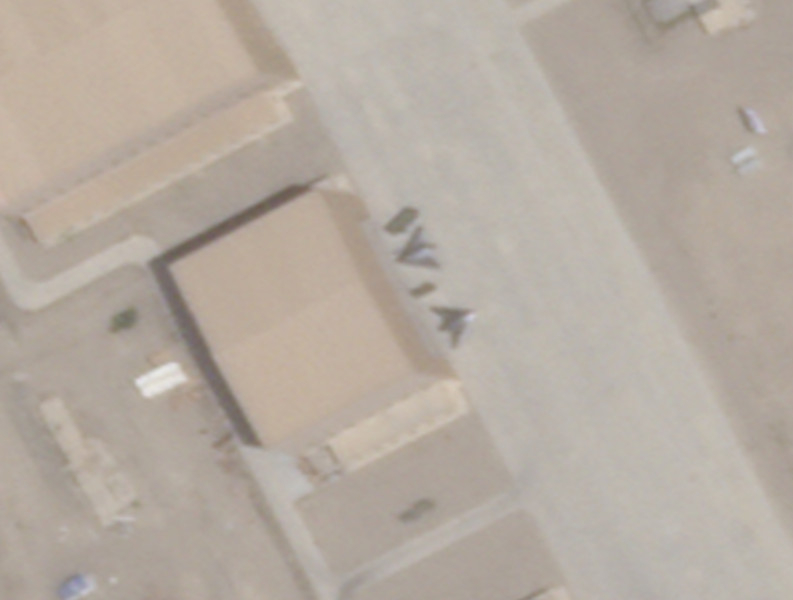
Having more than one GJ-11 available would allow for expanded real-world tests to demonstrate the ability of the drones to operate cooperatively, as well as alongside crewed platforms, and potentially do so with a high degree of autonomy. Multiple Sharp Swords would also just increase the overall available capacity for testing these UCAVs, which could also help with the exploration and refinement of future tactics, techniques, and procedures for employing them operationally.
Imagery showing the first flight of a Sharp Sword prototype with a substantially less stealthy design first emerged publicly in 2013. A mockup of a streamlined version with a completely overhauled rear aspect arrangement appeared at a parade in Beijing in 2019. Multiple images that appear to be of stealthier GJ-11s in flight have appeared online since then. What appears to be a new video clip of one of them in the air emerged online in the latter half of August.
The GJ-11 is designed for strike missions, with the ability to carry munitions in a pair of internal bays, as well as perform ISR tasks. Sharp Swords have been depicted launching decoys and carrying out what appear to be electronic warfare attacks, as well.
The Sharp Sword has already been increasingly tied to People’s Liberation Army (PLA) plans to team crewed J-20 stealth fighters with UCAVs. The War Zone has previously explored how the two-seat version of the J-20 that first emerged in 2021 could be especially well suited to the airborne drone controller role.
Since 2019, a variant or derivative of the GJ-11 has also looked to be increasingly bound for future operations from PLA Navy (PLAN) carriers and big-deck amphibious assault ships.
Earlier this year, a pair of apparent GJ-11 mockups emerged at a test and/or training site on Changxing Island in Shanghai near where the first example of a new supersized amphibious warship commonly referred to as the Type 076 is under construction. The yard where that ship is being built also produced China’s new aircraft carrier, the Fujian, the country’s first to feature a catapult-assisted takeoff but arrested recovery (CATOBAR) configuration. A Sharp Sword mockup has also been previously spotted at a full-size aircraft carrier deck test facility in Wuhan.
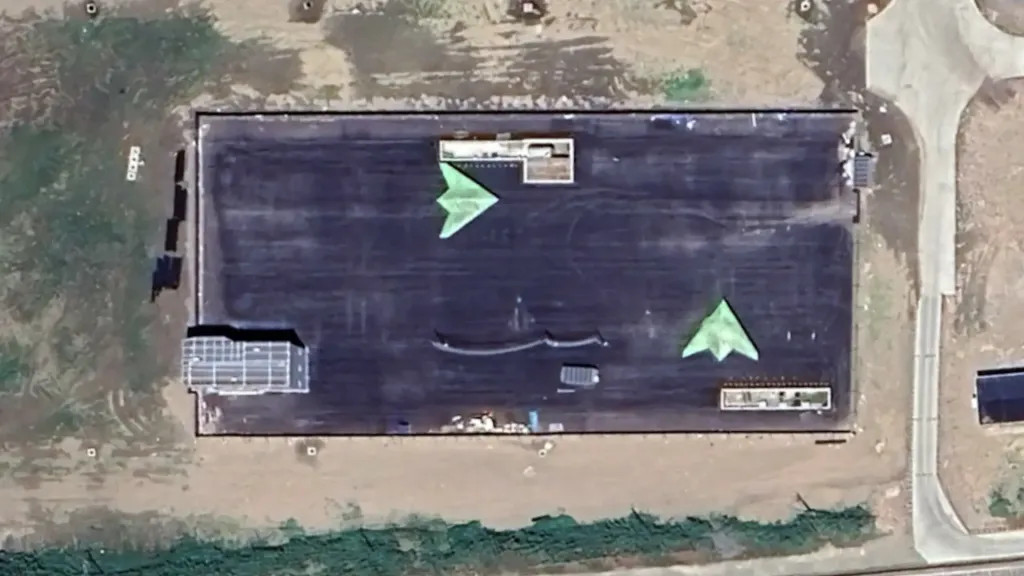
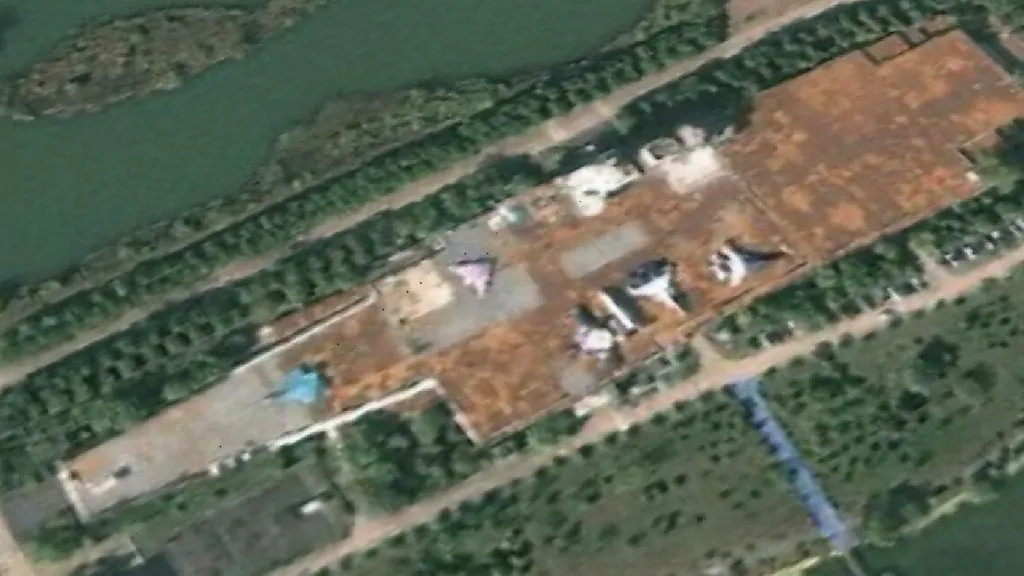
The Sharp Sword is just one of a number of flying-wing designs that Chinese companies have been working on publicly in recent years. This comes amid the PLA’s ever-growing uncrewed ambitions across all domains and other relevant developments, especially in crewed-uncrewed teaming and swarming technologies.
Another video that began circulating online on Monday most recently drew specific attention to China’s broader stealthy flying wing UCAV developments. However, it is unclear where or when the clip was shot, and elements of the footage, seen below, raise questions about whether it is entirely new.

In 2022, a clip with a very similar runtime (separated in length by just around a second) showing a very similar, if not identical design also appeared online, again without clear details about its origins.
The new video is higher quality than the one from 2022 and shows the drone moving in the opposite direction, but there are some distinct similarities between the two clips, as seen below.

What the clip from 2022 or the one that more recently emerged shows remains unknown. The possibility has been raised that the clip that began making the rounds on Monday shows a design from the state-run Aviation Industry Corporation of China (AVIC) called the CS-5000T, which first appeared publicly at the biennial Zhuhai Airshow in 2022. The War Zone noted at the time that the example on display at Zhuhai that year had features that suggested it was not a mock-up and raised the question of whether it might be what was seen in the 2022 footage, which had emerged just weeks beforehand.
Little is known about the CS-5000T, but “[as far as I know], the CS-5000T is a demonstrator for an ISR UAV [intelligence, surveillance, and reconnaissance uncrewed aerial vehicle] with a secondary strike role,” Andreas Rupprecht, a longtime China aerospace observer and contributor to The War Zone, wrote on X. Other smaller designs in AVIC’s CS-series have been described as target drones for use in training, as well as for research and development and test and evaluation activities. However, as The War Zone has noted in the past, the CS-5000Ts is a substantially bigger and more capable-looking drone that seems unsuited to the flying target role.
Other drones with modified cranked kite planforms have also emerged in China over the years, including AVIC’s smaller CS-550T. Star Systems’ Star Shadow and the CH-7 from state-owned China Aerospace Science and Technology Corporation (CASC) were also raised the possibilities for what was seen in the video that emerged back in 2022.
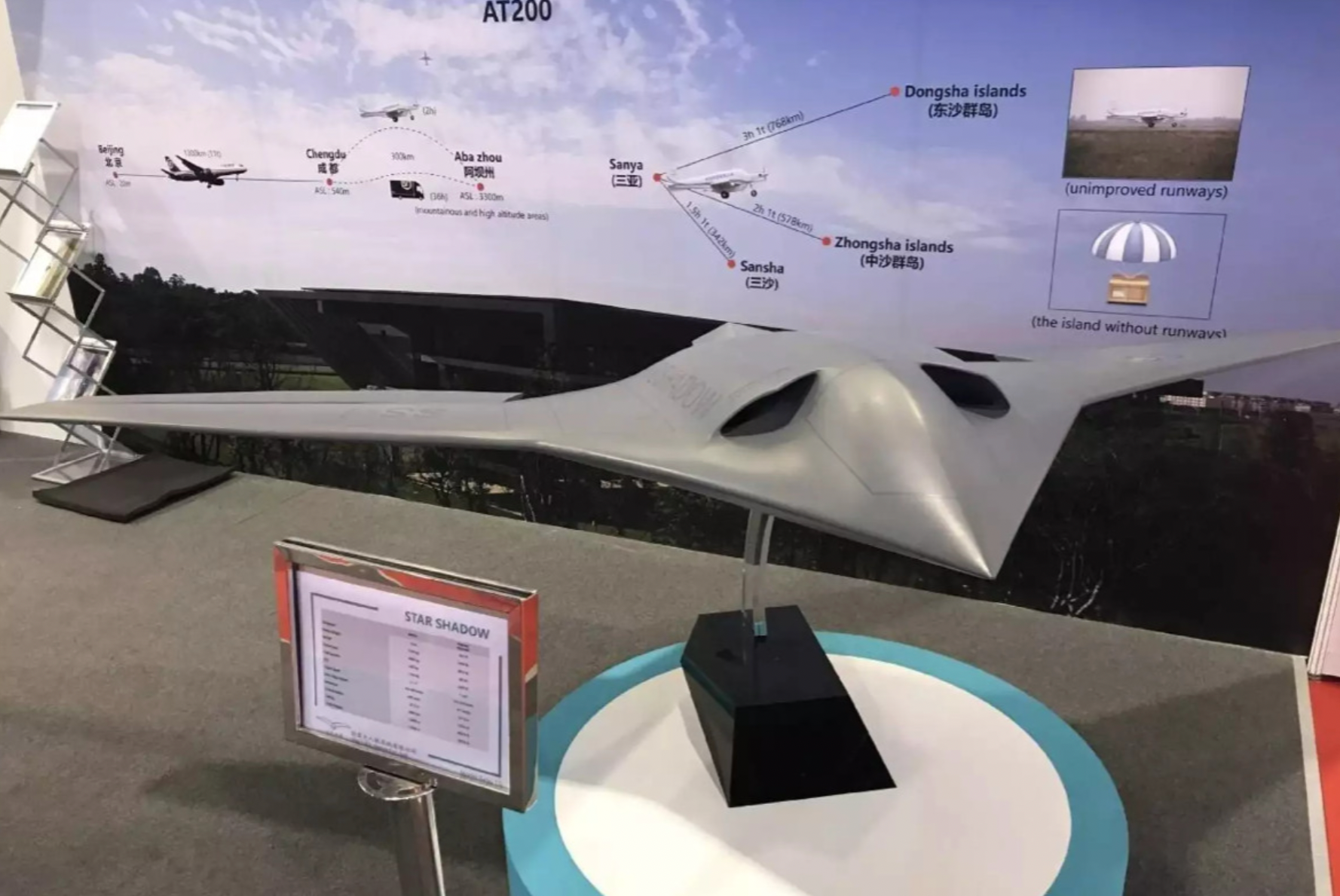

There remains the potential that the 2022 clip and/or the newer one show a subscale demonstrator or some other kind of flying model, as well.
Still, the breadth of potential options underscores the difference between what is being observed in China’s aviation sector and that of the United States when it comes to flying wing UCAVs. The U.S. military has no such drones in active development, at least that we know about, and public interest in designs of this kind has completely disappeared within America’s armed forces. This is all despite extensive work the U.S. military funded on stealthy flying wing UCAVs in the past and their absence has become particularly pronounced when it comes to U.S. Air Force future planning, as you can read more about in this past War Zone feature.
The U.S. Navy did conduct very thorough testing of a pair of carrier-capable X-47Bs, a design that also has modified cranked kite planform, during the 2010s. For a time, the X-47B looked set to be the precursor to a new fleet of stealthy pilotless strike and reconnaissance platforms for the Navy’s carrier air wings before that was supplanted by a plan to acquire drone tankers with secondary ISR capabilities, which led to Boeing’s MQ-25 Stingray. Talk of arming the MQ-25 has emerged, but when or if that might happen is unclear.

In terms of next-generation air combat drones, the Navy, as well as the U.S. Air Force are currently focusing their attention on lower-cost designs intended to work closely with crewed combat jets, at least initially, as part of their respective Collaborative Combat Aircraft (CCA) programs. CCAs are a completely different category of drone from flying wing UCAVs, which offer the potential to be very low-observable (stealthy) in their designs, as well as have much greater range and payload capacities.
There is the possibility that some level of U.S. stealthy UCAV work is continuing in the classified realm, but The War Zone has been highlighting the apparent growing trend in ceding this space to competitors like China for years now.
The new satellite imagery of GJ-11s at Malan, coupled with the other evidence of expanding Sharp Sword testing, as well as the recently emerged videos, now point to further expansion of Chinese work on flying wing UCAVs.
Contact the author: joe@twz.com
